Military
In November 1914 Mr and Mrs Charles Billyard-Leake, Australians resident in the UK, offered their home, Harefield Park House and its grounds, to the Minister of Defence in Melbourne for use as a convalescent home for wounded soldiers of the Australian Imperial Forces (AIF). The offer was accepted by the Commonwealth Defence Department and the property became the No. 1 Australian Auxiliary Hospital in December 1914. It was the only purely Australian hospital in England.
The Hospital consisted of Harefield Park House, a 3-storey plain brick building, some out-buildings and grounds of some 250 acres. It was proposed that the Hospital would accommodate 60 patients in the winter and 150 in the summer. It would be a rest home for officers and other ranks, and also a depot for collecting invalided soldiers to be sent back to Australia.
The medical and nursing staff comprised one Captain from the Australian Army Medical Corps, one Sergeant, one Corporal, four Privates (as wardsmen and orderlies), one Matron and five Nursing Sisters. The Medical Superintendent was to be under the supervision of the High Commissioner.
The appointed Matron, Miss Ethel Gray, and five nurses departed Australia on the RMS Osterley, arriving in England at the end of March 1915. The first Medical Superintendent was Captain M.V. Southey, AAMC. He and his medical team set sail from Australia on the Runic, scheduled to arrive in mid April 1915. Their first duty on arrival was to purchase the necessary equipment for the Hospital, and to furnish and equip the house ready for use by Australian troops by June 1915.
As Harefield Park House could only accommodate a quarter of the number expected, hutted wards were built on the front lawn, and a mess hall for 120 patients in the courtyard. By May 80 beds were ready.
The first 8 patients arrived on 2nd June 1915. By 22nd June the Hospital had 170 patients and extra huts were built. The first operation was performed in July. In August, when the Hospital had 362 patients, King George V and Queen Mary visited for two hours, speaking to every patient confined to bed. In September extra beds had to be found urgently for another 49 patients. An Artificial Limb workshop opened at Christmas.
In January 1916 an eye ward opened. An Orderlies Canteen opened for all ranks below Sergeant. A Patients' Canteen had already been established and was run by a Committee, including Mrs Letitia Sara Billyard-Leake and her daughter Letitia, and ladies of the surrounding district.
By the end of March 1916 the Hospital had equipped 803 beds. In May Mr Billyard-Leake offered to rent his property The Red House in Park Lane, opposite the Officers' Mess, for use as staff accommodation.
In October 1916 the Hospital had 960 patients. In November it was recommended that, rather than remain a convalescent home, the Hospital should become a general hospital complete with operating theatres and an X-ray department. The staff now comprised one Lieutenant-Colonel, five Majors, 12 Captains, one Quartermaster (an Honorary Lieutenant), one Matron, two Head Sisters, 36 Staff Nurses, one Warrant Officer, 15 Staff Sergeants and Sergeants, 10 Corporals and 94 Privates. Two dental units and six masseurs were attached to the Hospital. An X-ray attendant and a laboratory attendant (both Sergeants) were added later.
An Australian Red Cross store opened in December. A small magazine was produced by the patients which, in December 1916, became an official magazine - the Harefield Park Boomerang. Initially published irregularly, it was finally established as a monthly magazine. (The final issue, entitled The Victory Number, was published in December 1918).
As the war progressed the Hospital became a general hospital. At the height of its use it accommodated over 1000 patients and the nursing staff had expanded to 74 members. By December 1917 the Hospital had three Lieutenant-Colonels, namely the Commanding Officer, a surgeon-specialist and a radiologist to the Australian Imperial Forces (AIF). It also had a large number of voluntary workers.
By August 1918 the Hospital had become a centre for ear, nose and throat (ENT) and eye disorders. It had Massage and Dental Departments and an Electrical Department where skiagrams (X-rays) could be obtained. The patients were housed in 36 large huts dispersed throughout Harefield Park. Nearly 50 buildings were in use, including workshops, garages, stores, messes, canteens, a recreation hall (where concerts and film shows were held), a billiards rooms, writing rooms, a library, a cookhouse, a detention room and a mortuary. For entertainment, tours to London were arranged and paid for out of canteen funds, and the ladies of the district made their cars available for country trips, picnics and journeys to and from the railway station, both for patients and visitors.
The Hospital gradually closed
down during
January 1919. The Hospital records were returned to Australia
after the war and are now lodged in the Australian War
Memorial Library.
In 1920 the site was sold to the Middlesex County Council who planned
to build a tuberculosis sanatorium, the Harefield Park Sanatorium.
Present status (March 2010)
The site now contains the Harefield Hospital.
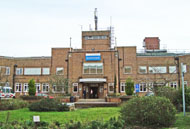
Harefield Hospital.
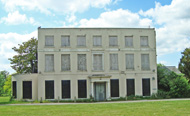

The eastern elevation with the main entrance of the old Harefield Park mansion house, is now sadly all boarded-up. The building, with its stables and coach house, is Grade II*-listed.
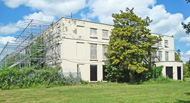
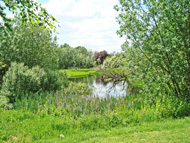
The southern side of the house (left). The western side, overlooking the lake (right), is supported by scaffolding.
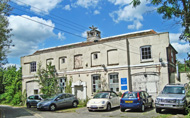
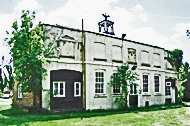
The south wall of the stables bears a sundial (left), while the north wall of the coach house has a painted clock (right). Each is adorned with stone eagles on the roof. Both buildings are boarded-up.
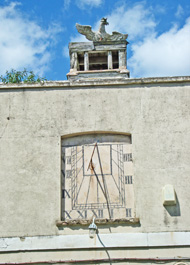
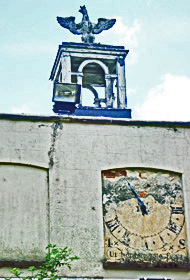
The sundial of the stables with its eagle (left) and the painted clock of the coach house (right).
112 Australian personnel are buried at the cemetery.
On ANZAC Day, 25th April 1918, the third anniversary of the landing at Gallipoli, a parade took place of staff and walking patients - some 337 personnel. The main service was held near the Australian graves, which were then decorated with flowers.
The highest monthly number of deaths at the Hospital occurred during October and November 1918, due to the Spanish flu epidemic.
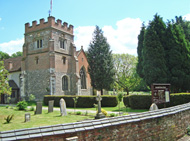

St Mary's Church, Harefield.
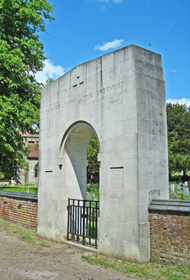
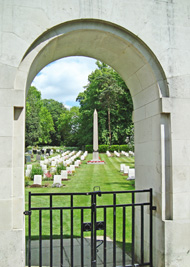
The memorial arch to the ANZAC military cemetery was erected in 1924 (left). The cemetery can be seen through the archway (right). The Grade II-listed memorial obelisk visible in the centre forms the centrepiece of the cemetery and was privately erected in 1921, rather than by the Imperial War Graves Commission. On the front is inscribed: TO THE GLORY OF GOD WHO GIVETH US THE VICTORY AND IN MEMORY OF BRAVE AUSTRALIAN SOLDIERS WHO AFTER TAKING PART IN THE GREAT WAR NOW REST IN HAREFIELD CHURCHYARD, and on the rear: THIS MEMORIAL IS ERECTED BY SIR FRANCIS NEWDEGATE KCMG NOW GOVERNOR OF WESTERN AUSTRALIA AND FORMERLY OF TASMANIA HONORARY COLONEL ELEVENTH BATTALION COMMONWEALTH MILITARY FORCES AND CHARLES ARTHUR MORESBY BILLYARD-LEAKE ESQ OF HAREFIELD PARK AD 1921.
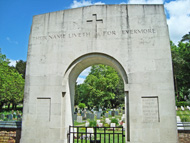
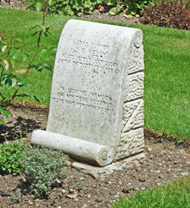
The top of the arch bears the legend 'Their name liveth for evermore', a quotation from Ecclesiastes 44:14 (left). An example of one of the gravestones, just to the left behind the arch, carved in the scroll pattern (right).
The cemetery is now maintained by the Commonwealth War Graves Commission.
Shepherd MP 1990 Heart of Harefield. London, Quiller Press.
http://1914-1918.invasionzone.com
http://outofbattle.blogspot.com
www.awm.gov.au (1)
www.awm.gov.au (2)
www.awm.gov.au (3)
www.british-history.ac.uk
www.diggerhistory.info
www.hillingdon.gov.uk
www.historycooperative.org
Return to home page